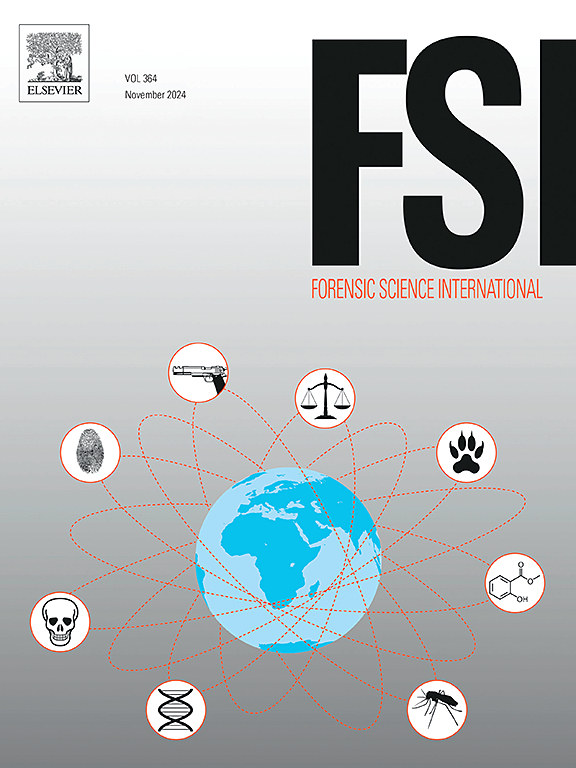Pen Ink Library: An interactive database of writing instruments based on Vis-NIR reflection spectra and optical properties of inks
IF 2.2
3区 医学
Q1 MEDICINE, LEGAL
引用次数: 0
Abstract
Many tasks in forensic examination of handwritten documents require classification of writing instruments that have ink of similar properties as the ink found on a questioned document. In this paper, we propose a new methodology for non-destructive identification of inks based on optical properties and reflectance spectra of the ink, measured from handwriting strokes. Building on this methodology, we developed an interactive database that we call the “Pen Ink Library”, which lists 718 various writing instruments and enables systematic comparison and semi-automatic search of writing instruments, using the measured characteristics of their ink. To highlight the significance and applicability of the database, we additionally exploit the large amounts of collected measurements to design computer-based data analysis methods for classification and comparative analysis of ink samples. For validation of the semi-automatic search functionality of the Pen Ink Library we performed a series of blind tests using twenty randomly selected writing instruments. Here, an instrument with the same brand and model was found in nine cases, and an instrument with a different brand and model, but with identical spectrum and optical parameters, was found in five cases. Cross-validation of the computer-based data analysis methods on the measurements from the database yielded above 90 % accuracy of the classification method and 5.3 % to 12.7 % error rate of the comparative analysis method.
钢笔墨水库:一个基于可见-近红外反射光谱和墨水光学特性的书写工具的交互式数据库
在手写文件的法医检查中,许多任务都需要对具有与被质疑文件上发现的墨水相似性质的墨水的书写工具进行分类。在本文中,我们提出了一种基于墨水的光学特性和反射光谱的无损识别墨水的新方法,从笔迹笔画中测量。基于这种方法,我们开发了一个交互式数据库,我们称之为“笔墨库”,它列出了718种不同的书写工具,并可以使用测量的墨水特性对书写工具进行系统的比较和半自动搜索。为了突出数据库的重要性和适用性,我们还利用收集的大量测量数据设计了基于计算机的数据分析方法,用于油墨样品的分类和比较分析。为了验证Pen Ink Library的半自动搜索功能,我们使用20种随机选择的书写工具进行了一系列盲测。其中,9个案例中发现了同一品牌和型号的仪器,5个案例中发现了不同品牌和型号的仪器,但光谱和光学参数相同。基于计算机的数据分析方法对数据库测量数据进行交叉验证,分类方法的准确率在90%以上,对比分析法的错误率在5.3% ~ 12.7%之间。
本文章由计算机程序翻译,如有差异,请以英文原文为准。
求助全文
约1分钟内获得全文
求助全文
来源期刊

Forensic science international
医学-医学:法
CiteScore
5.00
自引率
9.10%
发文量
285
审稿时长
49 days
期刊介绍:
Forensic Science International is the flagship journal in the prestigious Forensic Science International family, publishing the most innovative, cutting-edge, and influential contributions across the forensic sciences. Fields include: forensic pathology and histochemistry, chemistry, biochemistry and toxicology, biology, serology, odontology, psychiatry, anthropology, digital forensics, the physical sciences, firearms, and document examination, as well as investigations of value to public health in its broadest sense, and the important marginal area where science and medicine interact with the law.
The journal publishes:
Case Reports
Commentaries
Letters to the Editor
Original Research Papers (Regular Papers)
Rapid Communications
Review Articles
Technical Notes.
 求助内容:
求助内容: 应助结果提醒方式:
应助结果提醒方式:


